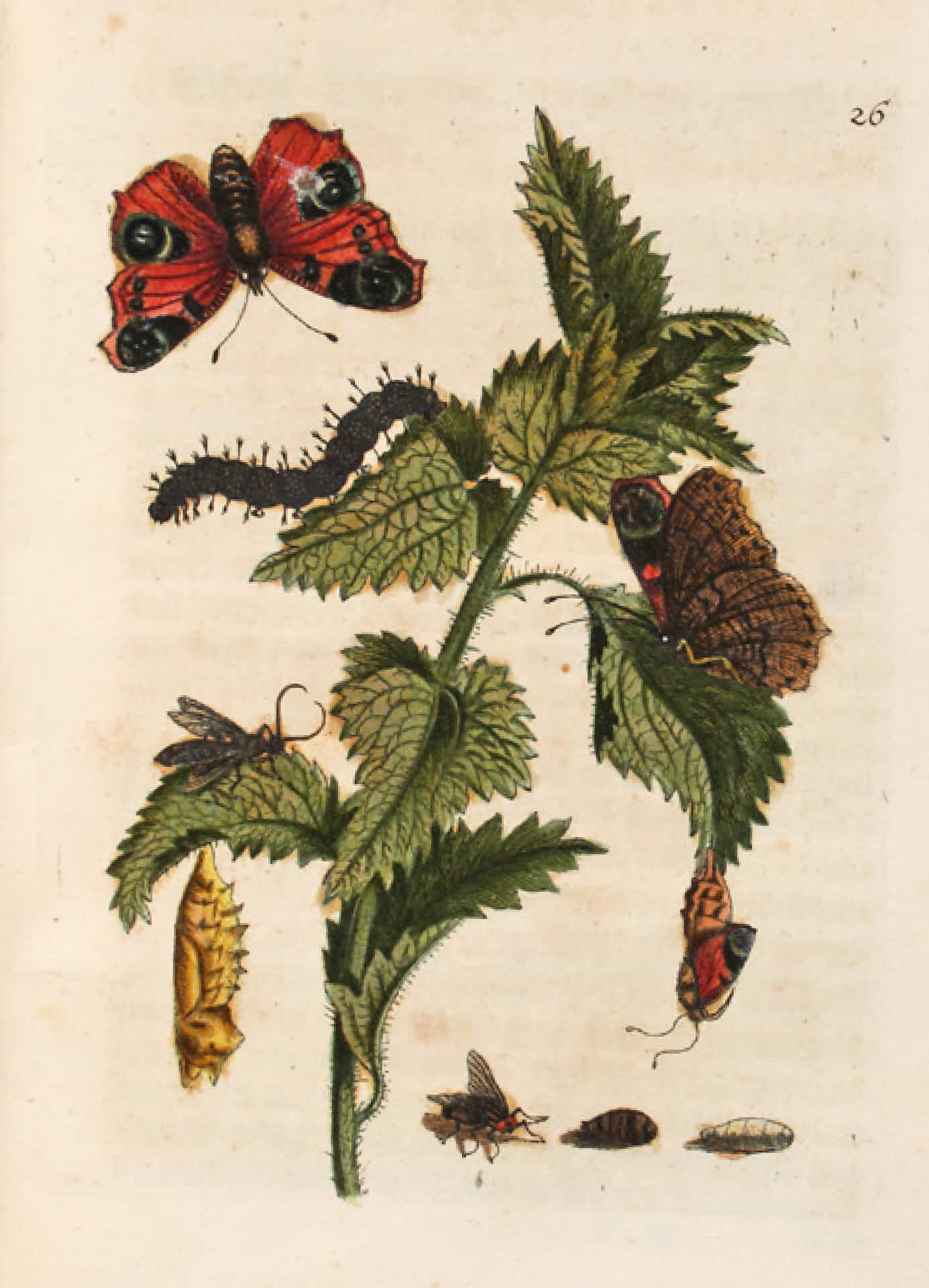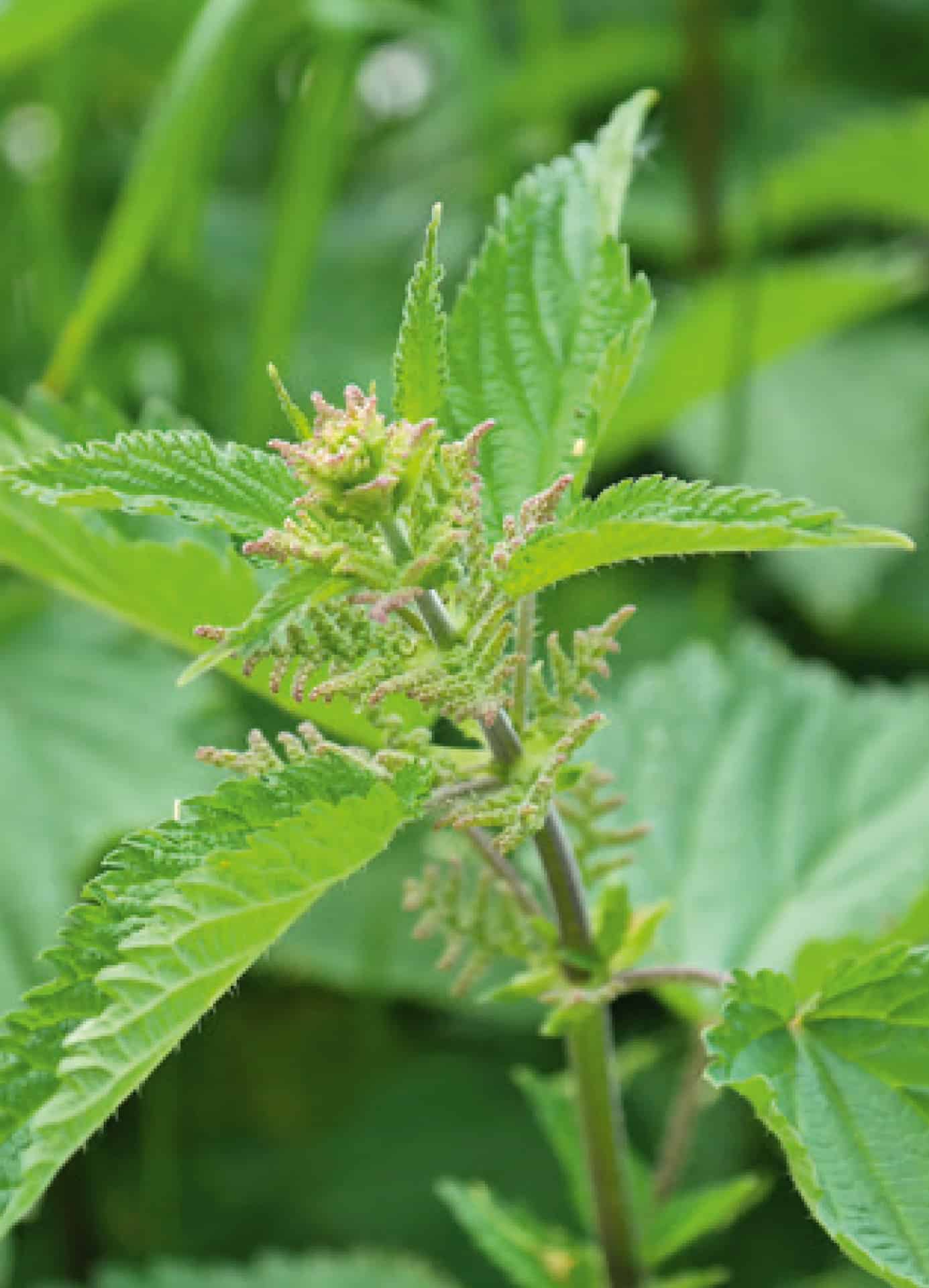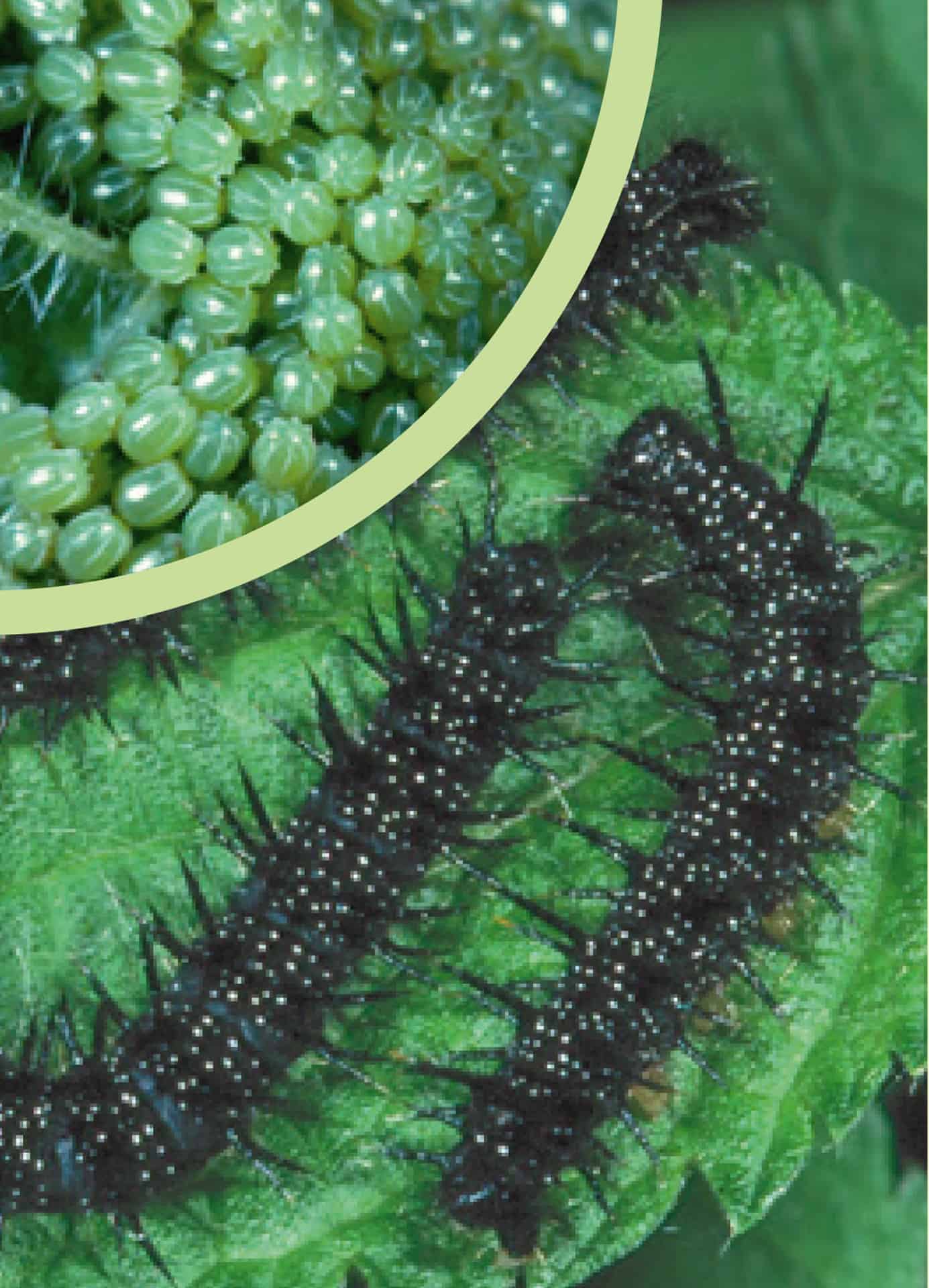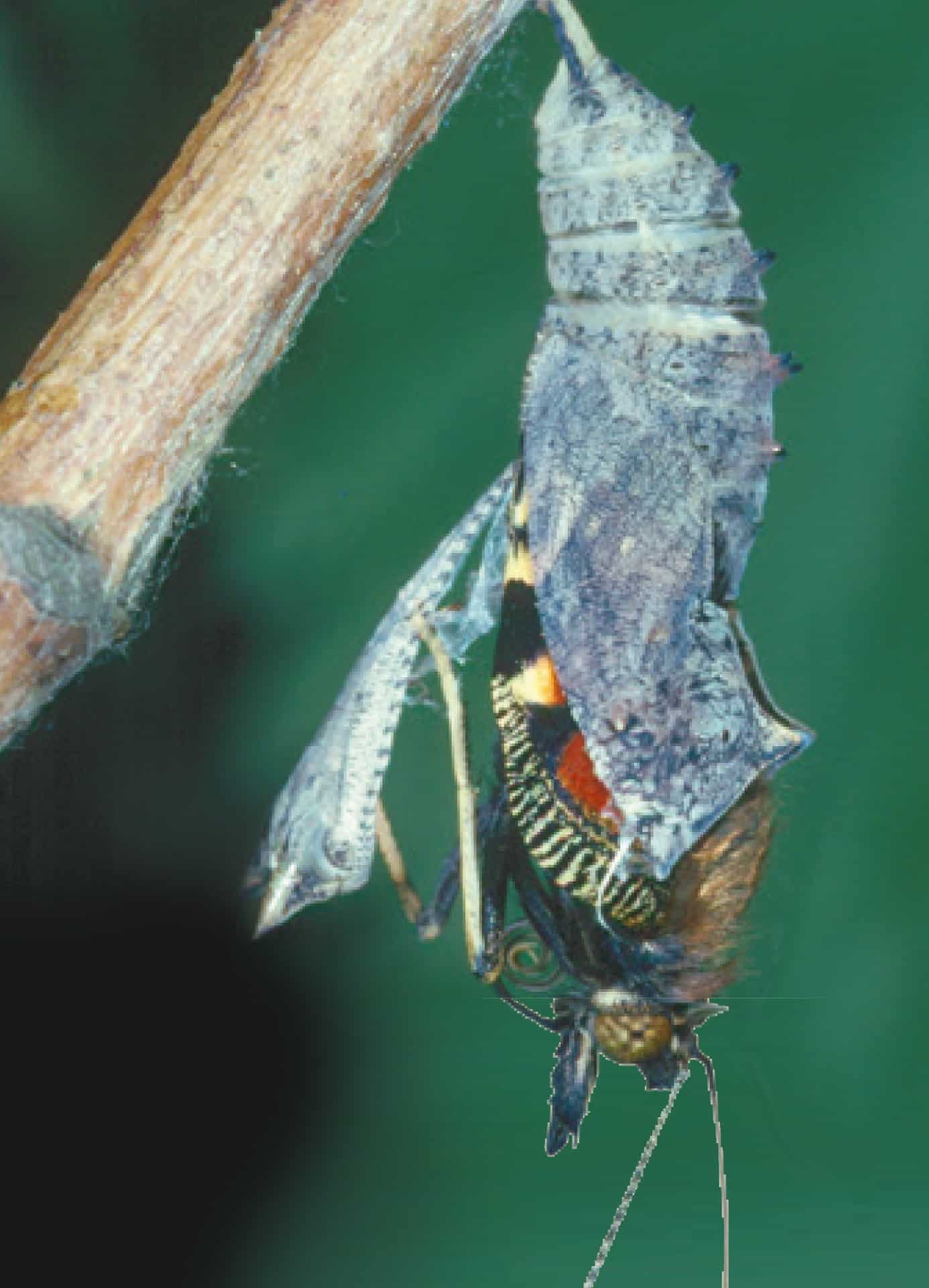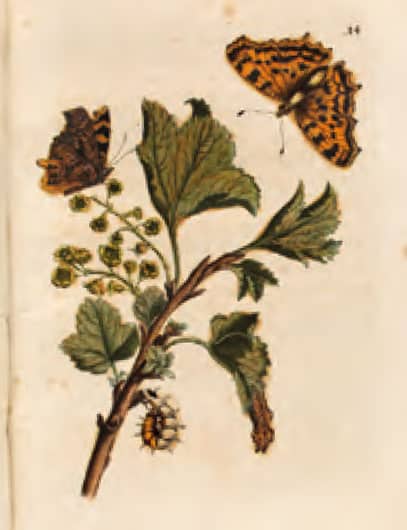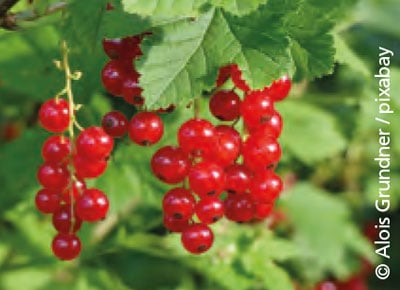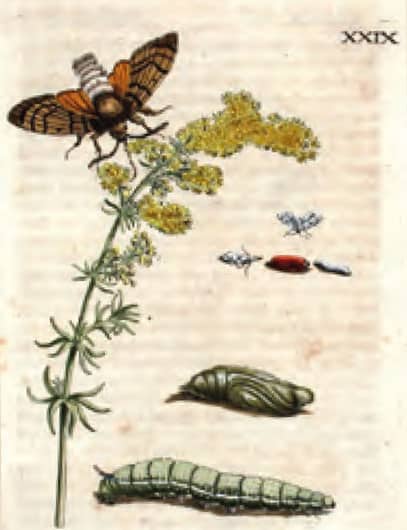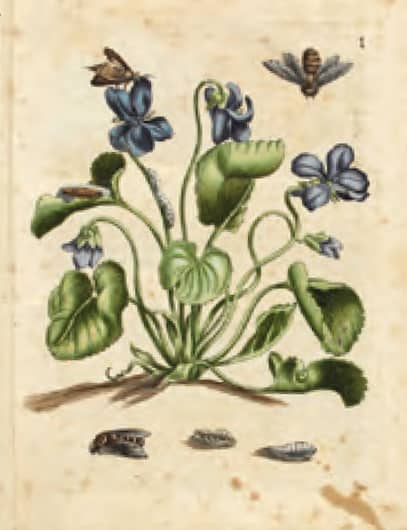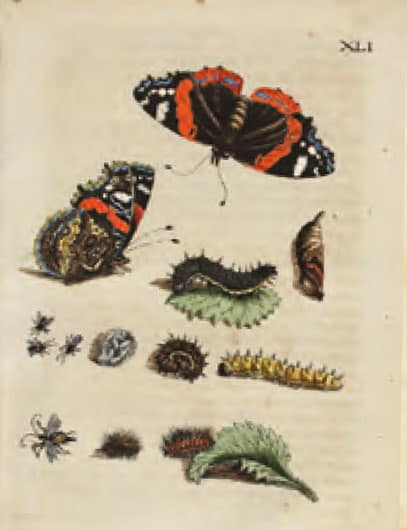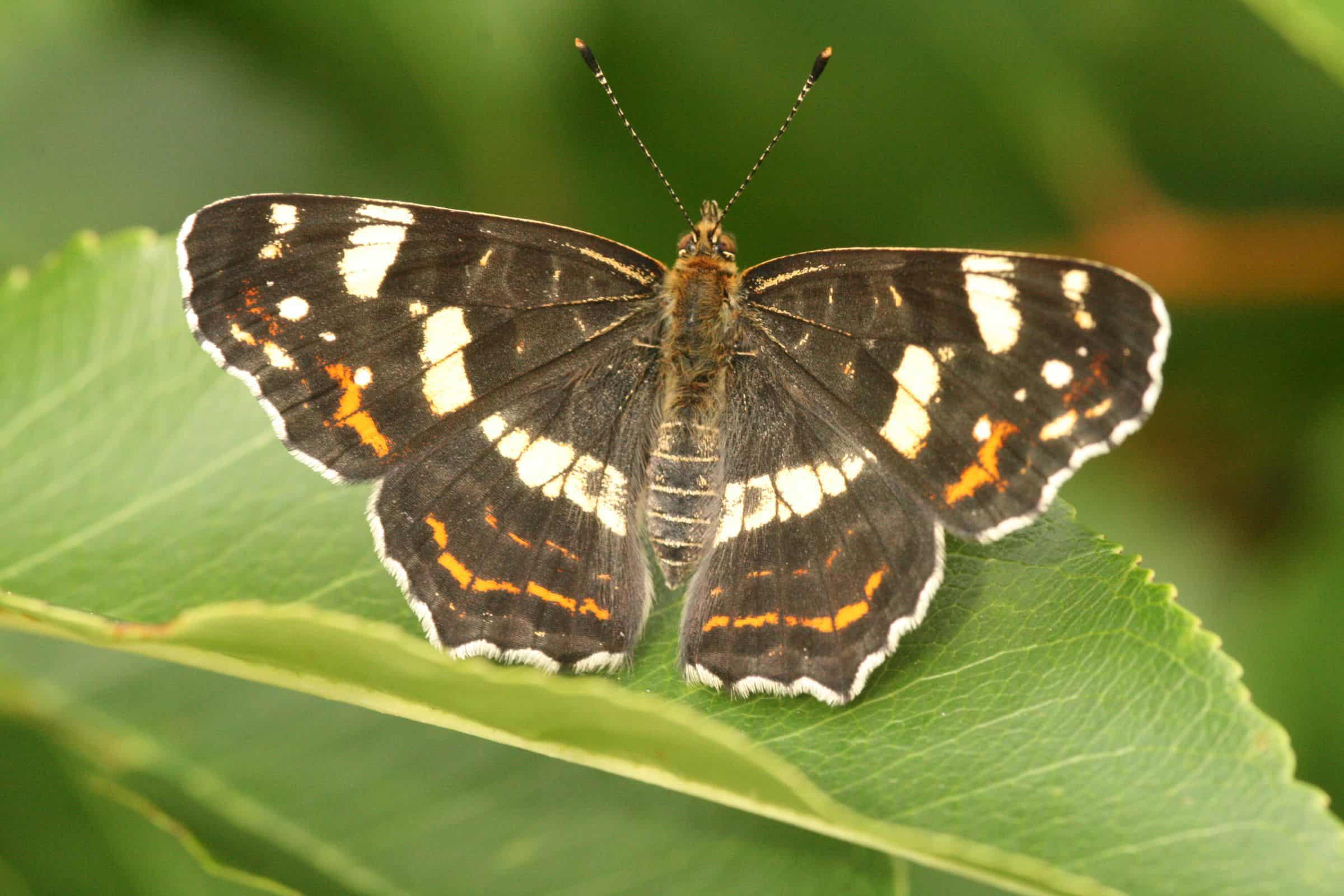BUTTERFLIES & CO. 350 YEARS AGO AND TODAY
Maria Sibylla Merian's lifelong research was dedicated to insects in their plant environment, which, time and again, she drew, painted and etched in copper with incredible precision, showing off all their beauty. The fact that the terms "butterfly" does not yet exist in her Caterpillar Books also illustrates just how little research had been carried out into her "little creatures" at that point. Her "little creatures" were still largely nameless.
Therefore, she uses the names of the host plants as headings to the chapters which describe the insects. In her time these names often still differed from region to region, but botany had already advanced to such an extent that Merian was able to complete her chapter headings with Latin names. In her descriptions, on the other hand, Merian concentrates on her "summer birds", which fly during the day, "moths", which fly during the night and many other insects.
When we contrast the present situation to the plants depicted in Merian's images, taking them together with the insects in both text and image in her Caterpillar Books, it becomes clear how precarious the habitat of the insects and their "host plants" is today.
In general, for butterflies to settle anywhere at all, they need "host plants" on which they can lay their eggs. When the caterpillars have hatched, these become their "food plants" on which they pupate. Sometimes they are so voracious that only thin stems remain, but as compensation for this small loss, the new butterflies unfold their wings.
Many species have specialized.
Wild hedges, e.g., with sloes, are visited by over 120 butterfly species.
Some of these "host and forage plants" are presented below.
IN COMPARISON WITH OUR OBSERVATIONS TODAY
Stinging nettle (Urtica urens, major)
“When I acquired the black caterpillar depicted above, no one would have persuaded me to believe that such a beautiful summer bird [= butterfly] should develop out of such a misshapen form). However, since then I have discovered that quite a few unattractive caterpillars have often turned into something quite beautiful. Such completely black caterpillars are found in June in considerable numbers.”
Illustration and excerpt from the description in the First Caterpillar Book of “Maria Sibylla Gräffin, née Merianin”, coloured copperplate etching no. 26
Peacock butterfly (Aglais io)
Family: Nymphalidae
The development (metamorphosis) of the peacock butterfly is also typical for other butterflies. The illustrations above show, from left to right: eggs, caterpillars, pupa and butterfly.
Photo: W. Dötsch
Red currant, in flower (Grossularia hortensis, non spinosa, florens)
“At the end of June, the summer birds, [butterflies] mentioned above, come out. On their inner sides [dorsal sides], they are gold- or saffron-yellow with brown spots; on the outer sides [ventral sides], however, they are all brown and have a clearly visible white Latin “C” on them. They are altogether very nicely speckled with larger and smaller spots.”
Illustration and excerpt from the description in the First Caterpillar Book of “Maria Sibylla Gräffin, née Merianin”, coloured copperplate etching no. 14
Comma butterfly (Polygonia c-album)
Family: Nymphalidae
It has a clearly visible white C on the underside of its wings.
Photo: W. Dötsch
Lady’s bedstraw (Gallium luteum)
“Such little birds [= butterflies] had a long beak between their horns [= antennae], which they use to extract the sweetness from the flowers. They fly very fast, so it takes a lot of work to catch such birds. I have placed one on top of this little flower, depicting the way it extracts the sweetness from the flowers with its long beak.”
Illustration and excerpt from the description in the Second Caterpillar Book of Maria Sibylla Gräffin, née Merian, coloured copperplate engraving no. 29
Hummingbird hawk-moth (Macroglossum stellatarum)
Family: Hawkmoths (Sphingidae)
This butterfly lays its eggs in flight. It buzzes over the flowers like a hummingbird. It sucks the nectar from the flowers with a long proboscis, which Merian calls a “beak".
as Insect Pasture
Most butterflies live on nectar from flowers. Colourful flower meadows, native wild plants and herbs are ideal.
Tip: Only simple, single flowers are useful. Large, exotic, splendid flowers are hardly accepted.
Bees have a much shorter proboscis than butterflies. Flowers with flatter calyxes should therefore also be part of the planting for them. If possible, spread flowering times over the whole summer, including early spring bloomers.
Butterflies only survive in areas without poisons and pesticides. Choose a very sunny spot for the butterfly bed.
A popular shrub is the Butterfly Bush (Buddleja davidii). However, amongst the shrubs you plant you should also plan for native species that do not, like this one, only provide food in summer.
Blue March violet (Viola Martia purpurea)
“In this second part [= of the Caterpillar Book], we shall begin with the wonderful transformation of the well-known bees. And because the delicate, sweet honey in the flowers is their food, I have added the blue, fragrant, sweet violet (because this delicate and useful flower is one of the first flowers to bloom in the year) in preference to all others.”
Illustration and excerpt from the description in the Second Caterpillar Book of “Maria Sibylla Gräffin, née Merianin”, coloured copperplate etching no. 1
Red mason bee (Osmia bicornis)
Family: Megachilidae
It readily accepts nesting aids and is one of the first inhabitants of insect hotels.
Leaves of the stinging nettle (Urticae urentis folia)
“The caterpillar used the stinging nettle for food and changed into the hair-coloured date kernel [pupa], which clings to something with its hindquarters, but with its head hanging downwards. After a fortnight a very beautiful summer bird crawled out, so beautiful in colour and ornamentation that I have never seen more beautiful ones, in that they have many small, ornamental markings, intermingled and in all kinds of colours.”
Illustration and excerpt from the description in the Second Caterpillar Book of “Maria Sibylla Gräffin, née Merianin”, coloured copperplate etching no. 41
Admiral (Vanessa atalanta)
Family: Nymphalidae
This magnificent migrant butterfly is a summer visitor which even feels at home in our cities. It is found almost all over the world and hibernates in warmer regions.
Photo: W. Dötsch



